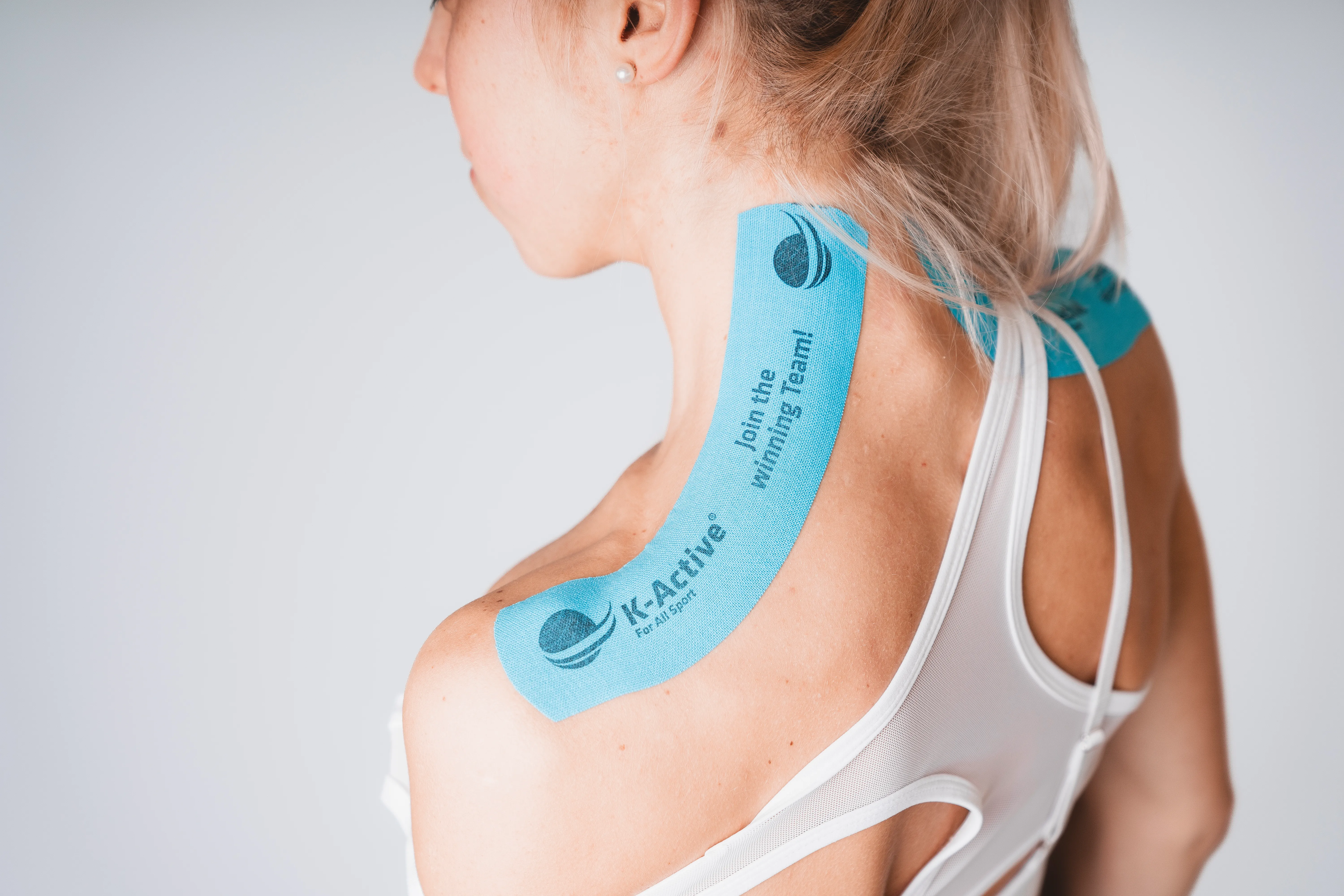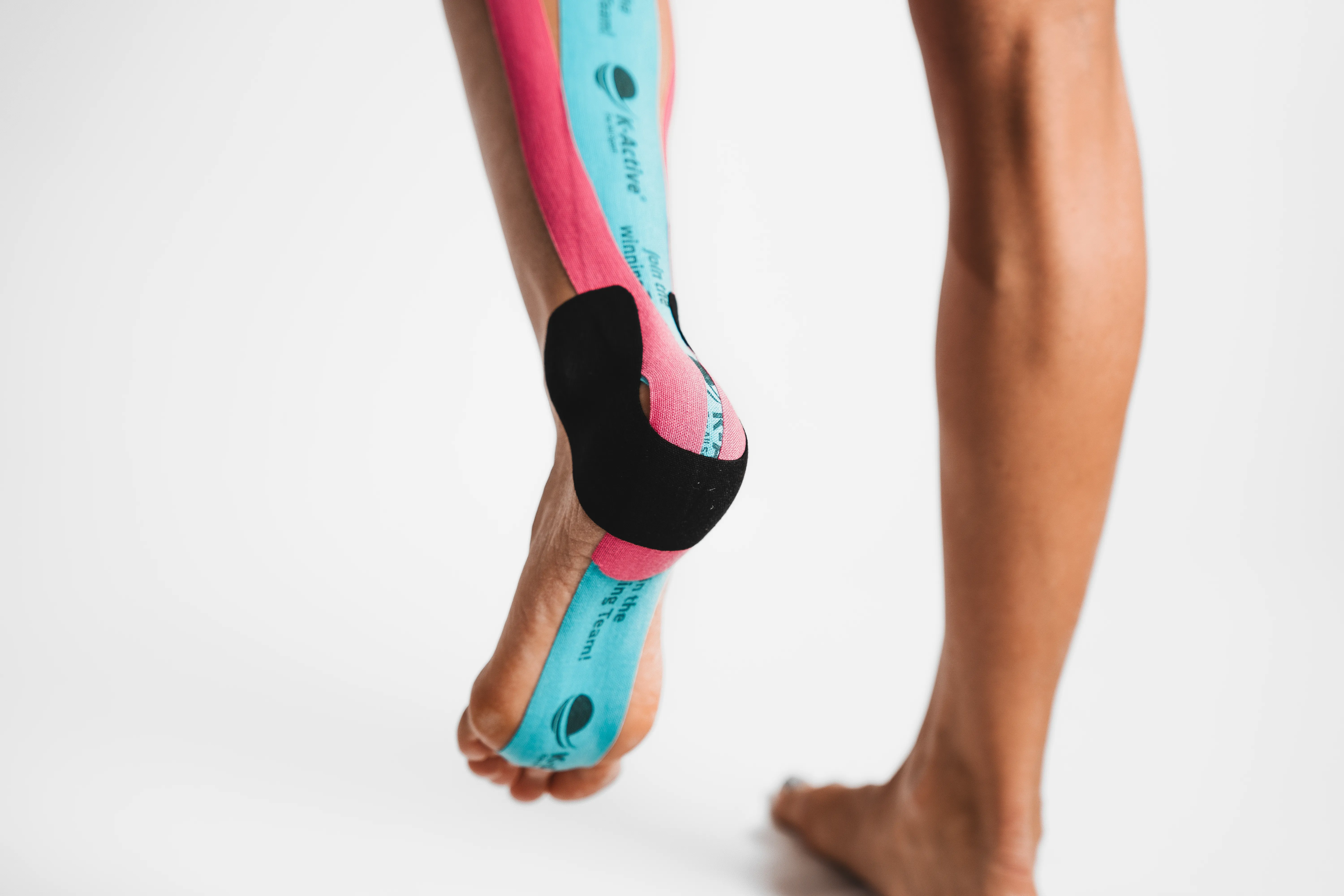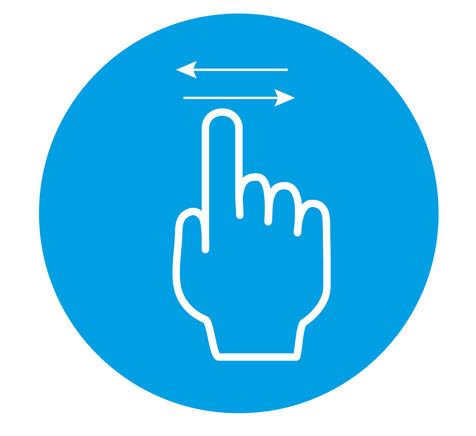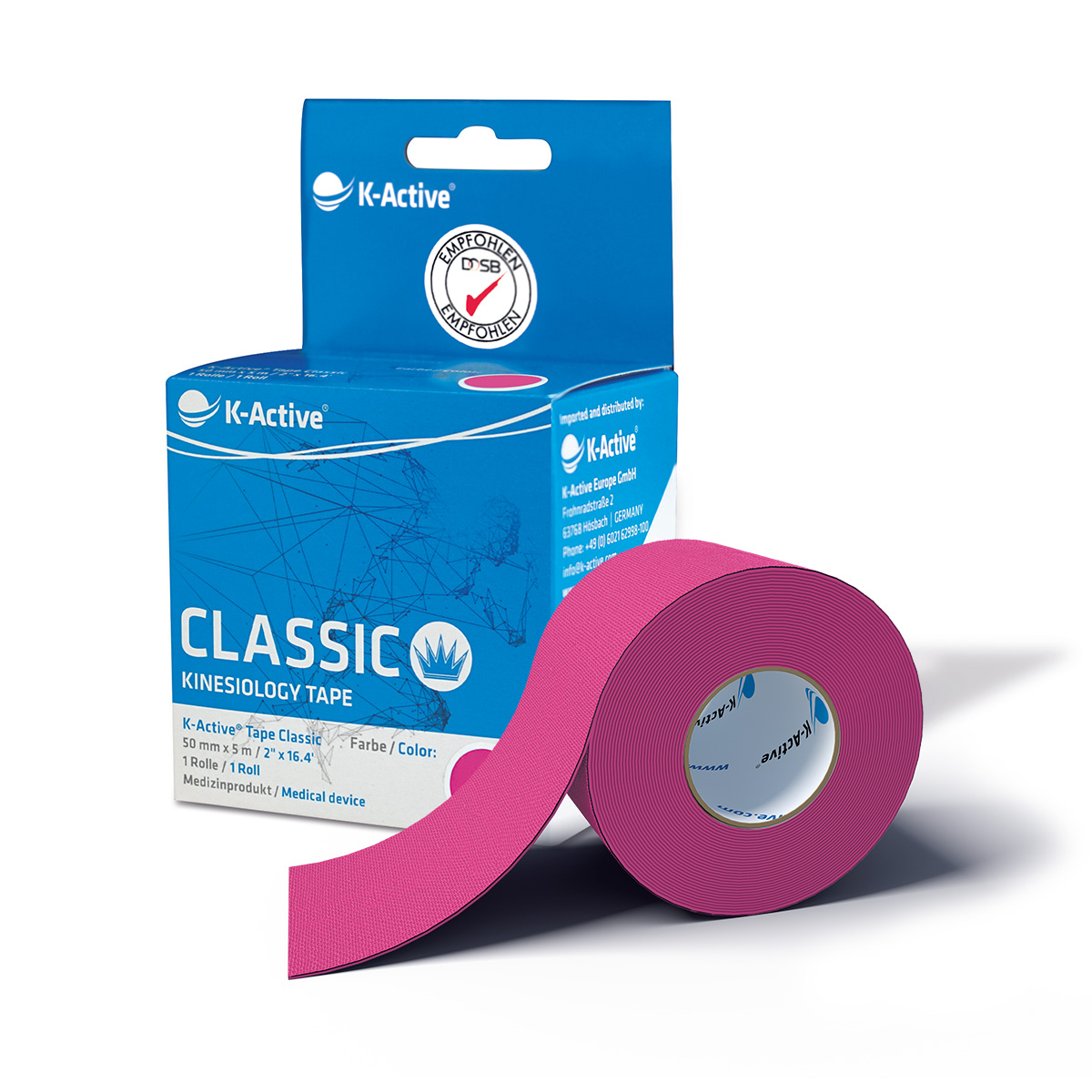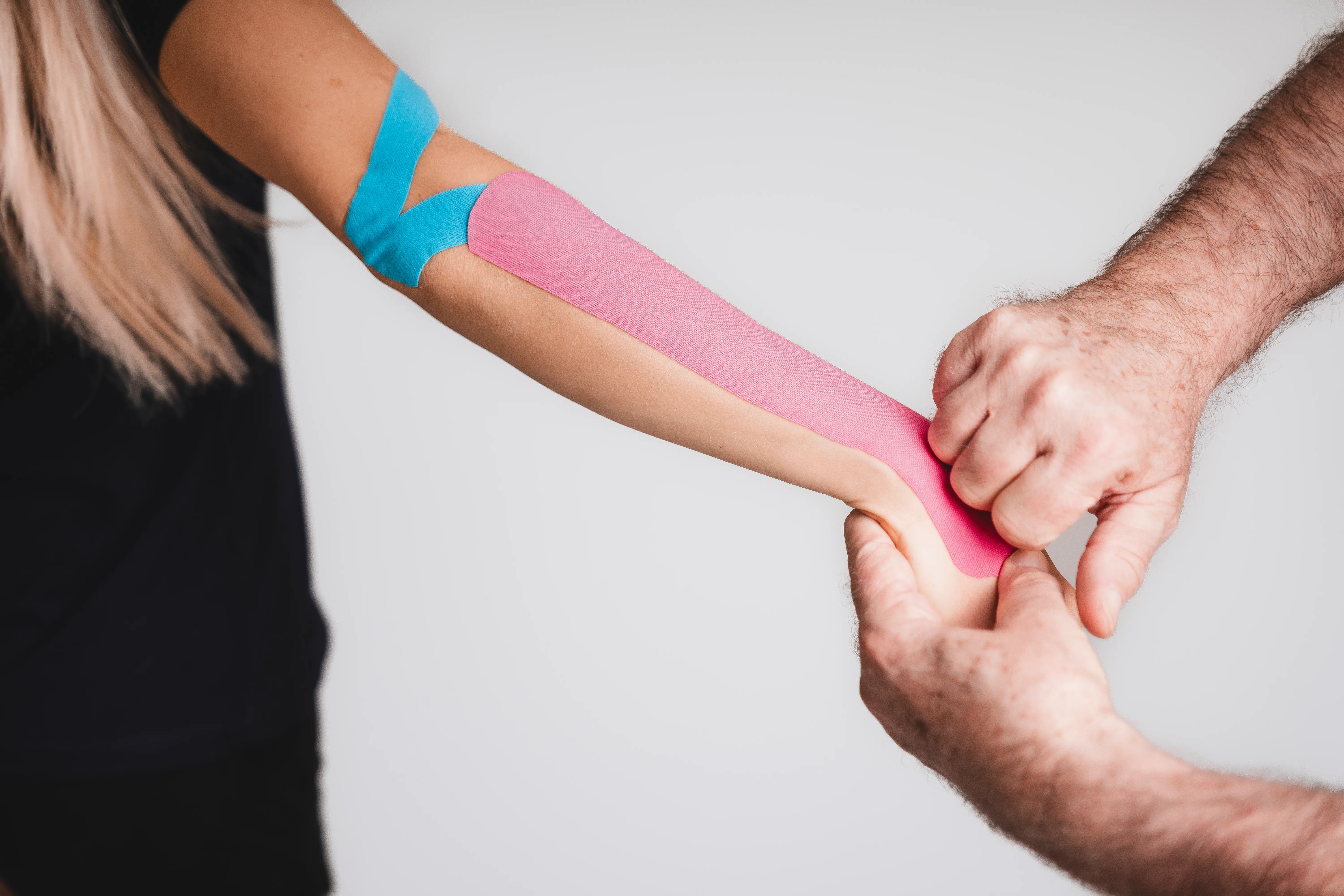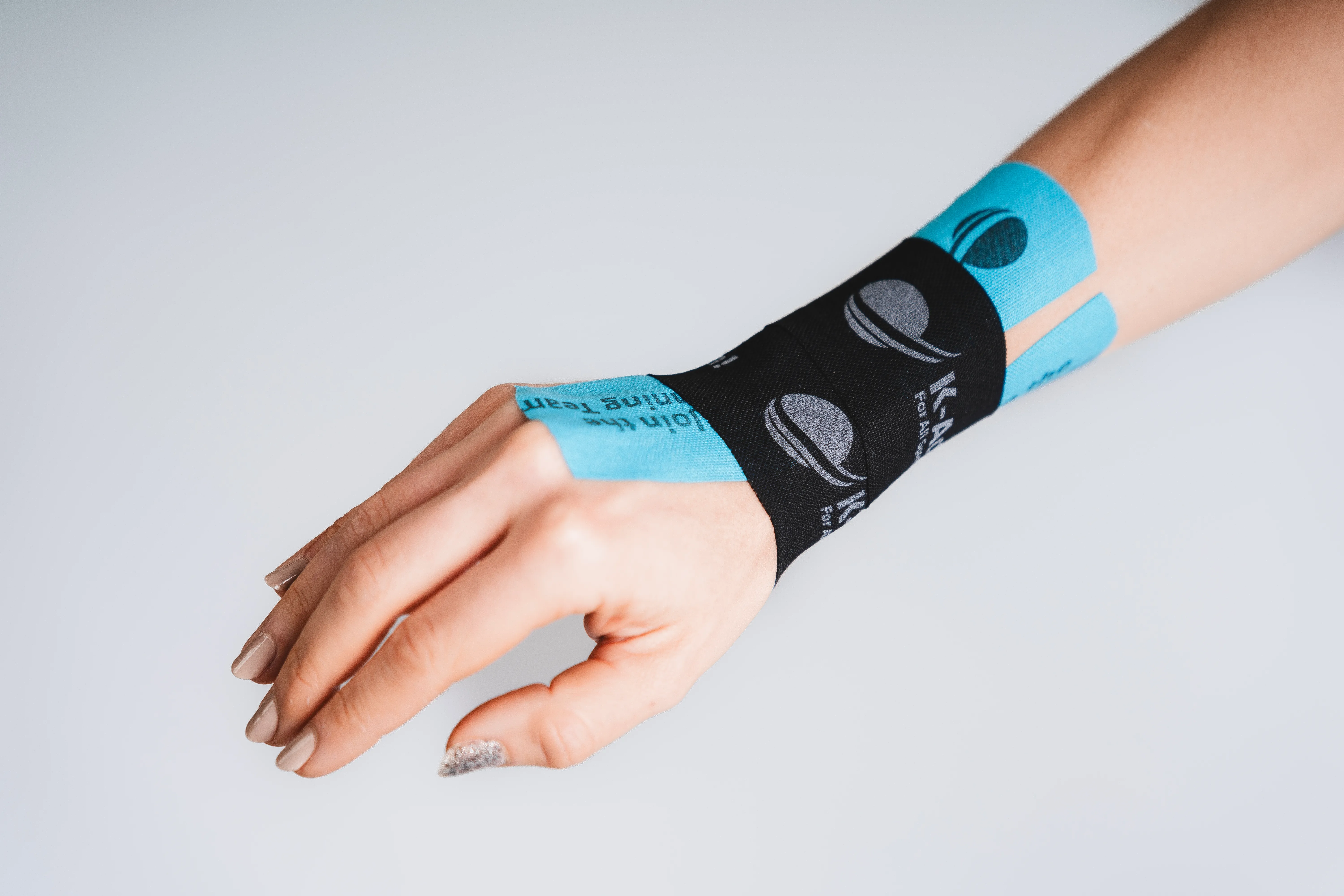
Taping wrist
K-Active
Main application area
Inflammation of the tendon (tendovaginitis)
Wrist instability
Muscle hardening of the forearm extension muscles
What you need
1 x tape (blue) -> approx. 10 cm
1 x tape (black) -> approx. 10 cm
2 x tape (blue) -> approx. 15 cm
2 x tape (black) -> approx. 10 cm
Duration of application
Up to 7 days
Information
Taping wrist - Tips



